Winter in the Golden Triangle of Andalusia
For many, Spain is one of the most appealing holiday destinations. When you think of summer, think about the Mediterranean waves that beat Costa del Sol, Costa Brava and all other Costa’s. In addition, the beautiful cities of Spain are also a true magnet. But in winter, what can you do in Spain in wintertime? Well, if you want an exotic holiday for New Year’s Eve and you do not want to travel too far away from Europe, Andalusia is the right place – you will enjoy sun, it will be warm, and you will see oranges in the trees… but you’ll be mostly amazed by the fusion of European culture with the Arab one in the beautiful golden Triangle of Andalusia – Granada, Seville, Cordoba. Few years ago, I spent my Christmas holiday in Andalusia and it was a real pleasure.
Andalusia is the southernmost province of Spain. This is where Muslims (Moors as they are called here) have invaded in 711. They forged splendid cities and lavish kingdoms until 1492. For 700 years, Andalusia has been a cradle of culture, of tolerance (both Jews and Christians were well received) and of luxury. Through Muslim Spain, the Christian world resumed contact with the knowledge of the ancient world driven away from Europe by the Catholic Church in the dark millennium. Through Cordoba, Granada and Toledo, the Europeans thus rediscovered Pythagoras or Euclid. Andalusia is also the place where the Arabs built magnificent palaces and mosques, in fact, it is considered that, except Taj Mahal or the great mogul palaces of India, the most beautiful examples of Arab architecture are not in Arabia, the Middle East or Northern Africa, but in southern Spain, in Andalusia. Mezquita Cathedral of Cordoba is considered the most beautiful mosque in the world, and the Alhambra palace in Granada might be the most beautiful Islamic palace in the world.
In my case, my first stop was Granada. After landing at Malaga Airport, only 3 hours later, you can reach the bus terminal in Granada. Firstly, a small shock. You expect it to be warm, in Malaga there were about 25 degrees, and in Granada it is cold. It is normal… Granada is in the mountains, the Sierra Nevada Mount, covered in snow, the only place in Spain where you can ski, is only two steps away. But you cannot complain too much … The city was full of Christmas ornaments, Christmas spirit hovers everywhere… and, once you have reached the central square, you discover that there is something more that floats in the air… Alhambra, the magical palace of Emirs of Granada. If, during summertime, visitors trample through the palace gardens, in winter you can enjoy this beautiful monument in silence… And you have plenty of things to see… Muslims loved the water, perhaps also because in Arabia of the genesis of their religion, water is an extremely rare element, so throughout all of Alhambra there are fountains, pools where the beautiful buildings are gracefully reflected and the famous Patio de los Leones is assailed by cameras. In addition, among palaces, gardens and fountains at the feet of Alhambra, city lies in a great view, like a submitted slave. And you can clearly see the difference between the Spanish and the older Arabic city – Albaicin neighbourhood, white, bright, like the North African medinas, today an outstanding tourist spot where people go in search of souvenir shops, but, especially of the superb views of Alhambra with the snowy Sierra Nevada mountains in the background…
You cannot visit Granada without going to a flamenco show. The most famous and most passionate dance of Spain is a gypsy dance, a synthesis of Indian rhythms and North-African energy, a real feast of dance and music. The most famous tablao – flamenco clubs are found in the Sacramonte neighborhood, beyond Albaicin, in the caves where gitanos used to be hosted. Meanwhile, Sacramonte has become a too touristic place itself and, therefore, too expensive for the gypsies to dwell around here, but the shows have been kept. And they are equally stunning, with a slow start, but that accumulates, threateningly, an energy in the air that, at some point, becomes unruly and breaks loose in a spectacular manner through men, backed by female dancers in a festival of colour and rhythm. The shows in Sacramonte are, obviously, for tourists only, but it is from here that appear many young talents who become the great stars of the Spanish flamenco, so, hopefully, if you go you can have the chance to see a rising star at her/ his debut…
Leaving Granada, you slowly descend towards the Andalusian plains. There appear green lands, you already feel like spring. It is beautiful, you go through orange groves with ripe fruit… and you expect the best.
And, suddenly, there appears Seville, the capital of Andalusia, a city that also hides special architectural and cultural treasures. Seville has been, along the centuries, the landing port of the gallions full of the gold of the Americas and many buildings were built out of it. After the compulsory landing at the hotel, not very far from the old centre, you cannot refrain from rushing downtown… where you meet a real parade of beauty… Firstly, the cathedral is huge, it is the third largest one in the world after San Pietro in Vatican and St. Paul’s in London, but it certainly is one of the most bedizened. Here we can also find the alleged tomb of Christopher Columbus (there are still a few places in the world that challenge this honour), but also beautiful Giralda, an ancient mosque minaret from where you can have an overview of the city, And you cannot miss, two steps away from the Cathedral, the Alcazar palace, a palace in the Moorish style, but built by Christian kings … After having visited the Alhambra, the Alcazar cannot surprise you anymore, but it is still a compulsory place to see … especially the green gardens full of orange trees, an oasis in a crowded city. Near Alcazar, you can find Barrio de Santa Cruz, the former Hebrew district, nowadays a pedestrian neighborhood, filled with traditional restaurants, souvenir shops, flamenco tablaos and, last but not least, superb houses with patios full of flowers. Flowers and water are a constant of Andalusian life and patios, a sort of inner gardens inside the houses are an oasis of pleasure.
You can walk on the shore of the Guadalquivir river, where, on the other bank, you find Triana, a neighborhood full of small restaurants where you can delight yourself with small tapas, Andalusia’s contribution to world cuisine, a few mouthfuls from different dishes – be it the a sort of vegetable stew, jamon or cheese, light snacks for a hot climate.
The lAlpha
TheThe ast stop on the route is, of course, Cordoba, a smaller town, but which houses perhaps the most beautiful mosque in the world – the famous Mezquita Catedral (that is Mosque-Cathedral). As everywhere in Andalusia, Muslim mosques were converted into churches after the Reconquista, but the one in Cordoba, except a shrine inserted in the middle of the mosque, completely out of the blue, is a true symphony of arched columns, with the mihrab indicating the direction of Mecca. And if you get to Cordoba, you cannot miss the famous Calleja de la Flores, a narrow alley full of flowers on the walls, another symbol of Cordoba. Or walk along the narrow alleys of Juderia (the old Hebrew district), today an outstanding commercial district.
Once you have visited Andalusia, you cannot refrain from re-evaluating the impact of Islamic culture on Europe. Here, at the border between the two civilizations, there have appeared some great places worth visiting. It is true that the expulsion of Muslims and Jews after the Reconquista has led to the ruining of the province, but Spain’s post-Franco economic recovery has brought back the former glamour of the sites and the millions of tourists to enjoy it. In addition, even Muslims have reappeared, this time not as conquerors and masters, but, rather, as guest workers. In Granada, you can find an entire bazaar identical to the Moroccan ones…
When to visit Andalusia
Andalusia can be visited at any time of the year. However, summer is extremely hot, Sevilla’s temperatures being constantly over 40 degrees, only Granada being cooled off by Sierra Nevada. Winter is, yet, mild, the hordes of tourists during summer being significantly reduced. In wintertime, I had about 20 degrees in Sevilla and Cordoba, but arout 5 degrees in Granada.
How to get to Andalusia
Andalusia has 2 major airports – Malaga and Seville. Although Seville is the capital of province, Malaga airport is busier – due to the proximity of the touristy Costa de Sol with its famed (and British-loved) beaches. Countless airlines connect Malaga with Europe and North Africa (sorry, no trans-atlantic flights), with Ryanair and Easyjet providing most of the flights. The new kid on the block, Volotea will also fly here pretty soon.
Seville airport is significantly quieter, but Ryanair operates also from here to 20 – 30 destination, including Marrakech ! Actually, after Andalusia, it will be a nice touch to your travels to fly also to the most enchanting city of Morocco… and see the common background it shares with Andalusia !
By train, there are 2 important railways, one coming from Barcelona, the other one from Madrid, both operated by AVE, the Spanish high speed train. However, check the prices, sometimes the low cost airlines can offer better fares than the train ! However, the train has the advantage of leaving you in the center of the cities ! Check prices and timetables on RENFE, the Spanish Railways site.
Transportation within Andalusia
The railway network within Andalusia is limited, and the connections are bad. If you do not rent a car, there is a dense and efficient network of buses linking the main cities at a quite good interval range. Instead, Andalucia’s ties with the rest of Spain are fast and convenient. The first high speed train in the peninsula, AVE was inaugurated on the occasion of the 1992 World Expo in Sevilla and in only two to three hours, you could reach Madrid. There is also an extremely comfortable night Talgo leaving Sevilla at nighttime, crossing Cordoba and, then, reaching the Catalan capital, Barcelona, early in the morning.
What you can eat in Andalusia
Paella, tapas, sangria, extremely good and cheap wine… shall I go on? I hardly think so, Spanish cuisine is famous and varied. Note that, on Christmas night, in smaller towns (such as Granada) all restaurants are closed… we had the major surprise of finding that even the McDonald’s was closed, what saved us from starvation was only an Arab’s shaorma place… for him, Christmas was not too much of a deal…
Andalusia Map
Check it out here.
Andalusia photos: Granada – Sevilla – Cordoba
Christmas in Cordoba
The romantic streets of Cordoba at night
The Cathedral of Seville
Mezquita-Catedral (Mosque-Cathedral) of Cordoba, one of the best examples of Islamic architecture
Calleja de los Flores (Flower’s Lane) in Cordoba… not too much in winter, wait for spring 🙂
Streets of Cordoba
The minaret, sorry, the bell tower of Seville Cathedral
Where we can clearly see the Islamic traces of the Cordoba Cathedral
The Emirs’ Palace of Cordoba – Alcazar !
Streets of Cordoba – full of souvenir shops
Seville by night
Plaza de Toros of Seville
Golden Tower of Seville – all the riches of the New World were bookept here
The football stadium of Sevilla FC – Estadio Ramon Sanchez Pizjuan
Plaza Espana and its tiles in Seville
Santa Cruz, the ex-Jewish neighborhood of Seville, today its touristic magnet
Alcazar – the 1001 nights dream of Seville
Wow – oranges in full winter !
Cathedral of Seville – claimed to be the 3rd largest in the world
Colombus tomb… one of the many 🙂
Seville seen from above
Giralda, the bell-tower of Seville
Gitanos’ flamneco show in Granada
Alhambra bu night – what can be more spectacular ?
Streets of Albaicin
The center of Granada honors the Catholic royals
Center of Granada… at Alhambra’s feet
Albaicin, the white neighborhood !
Gardens of Alhambra
The famed Patio of Lions


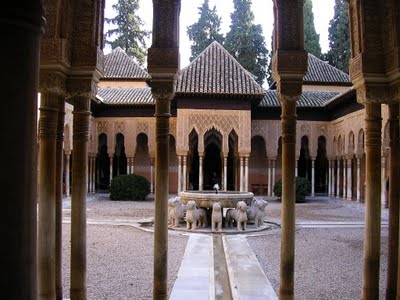
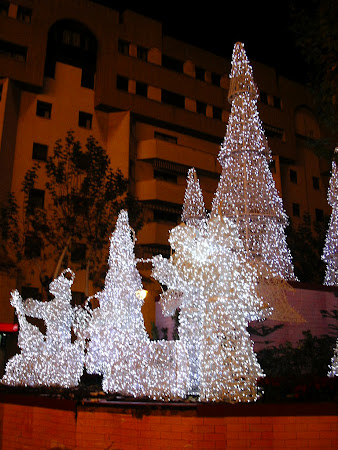




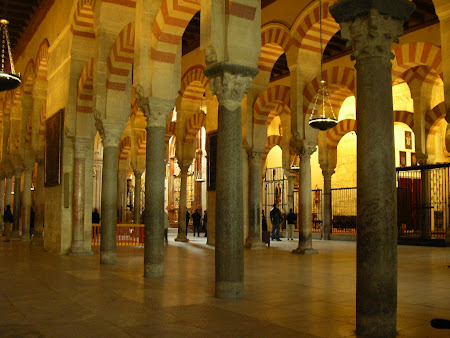






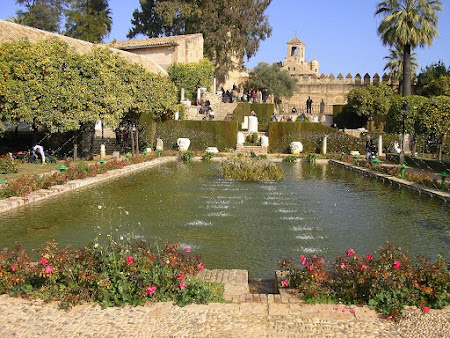












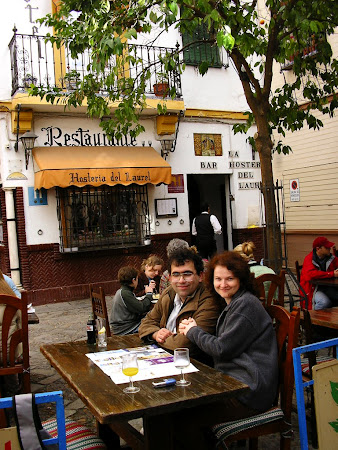
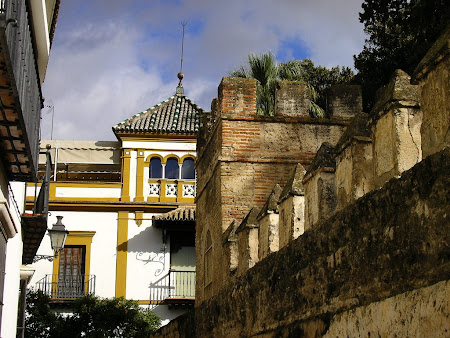




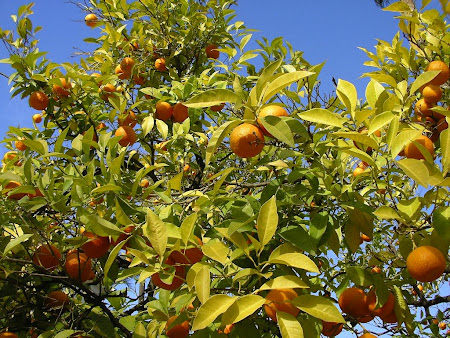








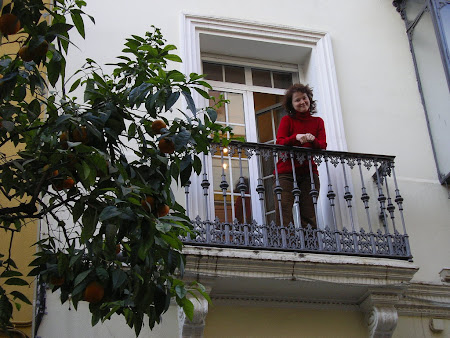
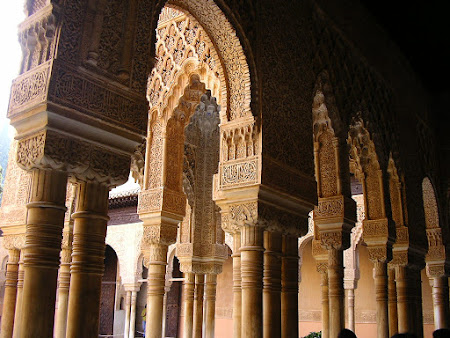



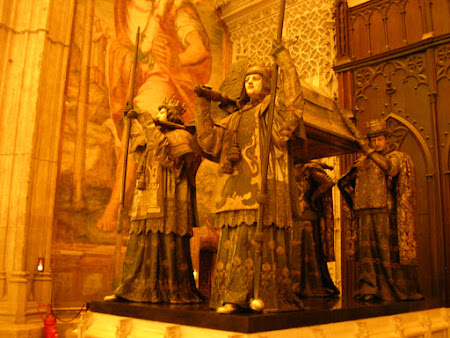


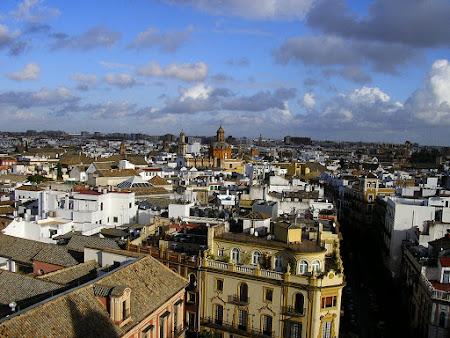

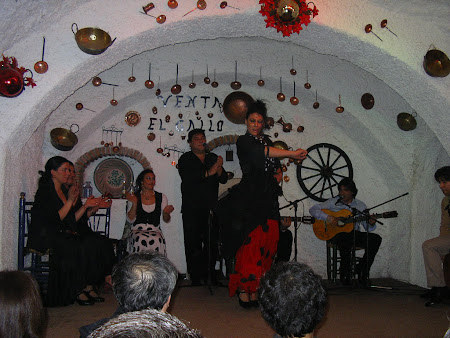







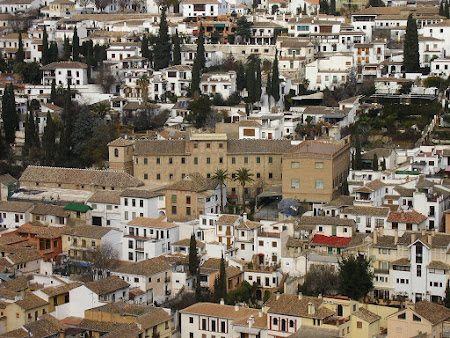














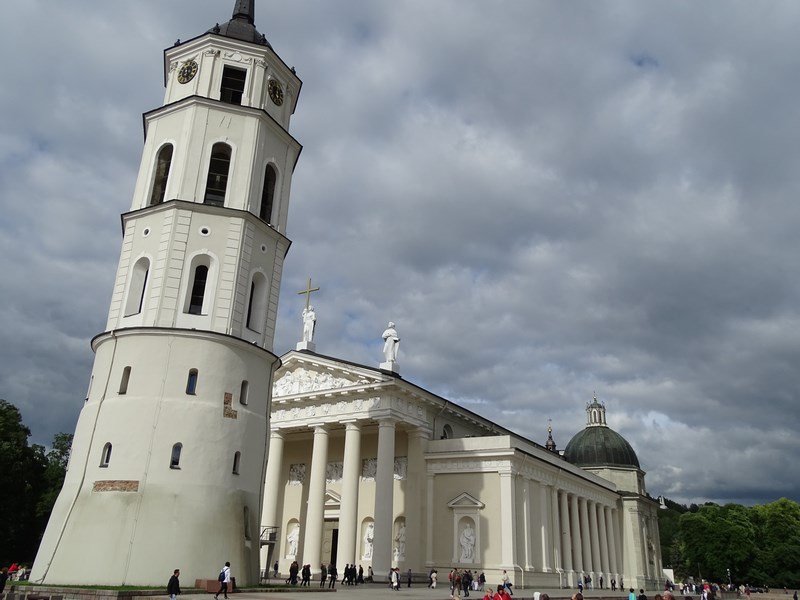




Can I ask why you travelled from Granada straight to Seville and then to Cordoba? Is it not easier to travel from Granada to Cordoba then to Seville? I just wanted to know as I am planning a driving holiday next month.
Thanks
I had a friend in Seville and I had to meet him first 🙂